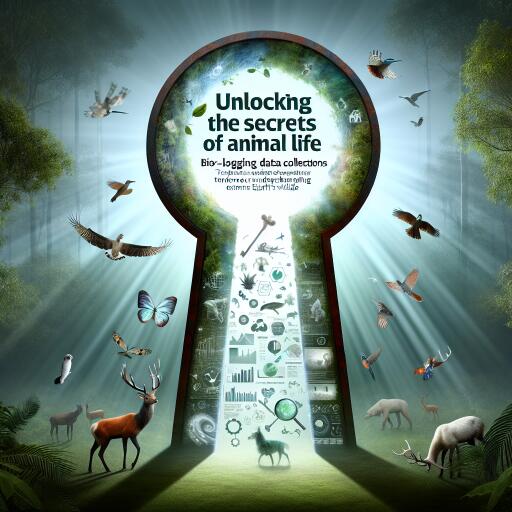
Creating Dynamic Archives: Transformational Insights from Bio-Logging in Animal Life Study
The field of biotelemetry, or bio-logging, has dramatically reshaped our comprehension of wildlife behavior and ecological systems. Utilizing progressive data collection techniques, researchers have started to gain comprehensive insights into various animal species thriving in their natural environments. This ongoing influx of data serves as dynamic records that significantly contribute to the continuous study of global biodiversity.
Bio-logging technology empowers scientists to observe animal behaviors and their environmental interactions over extended periods. Moving beyond sporadic observations or outdated datasets, this method offers a holistic view of how species adapt and evolve amid fluctuating ecosystems. Such dynamic data archives are vital to conservation efforts, enabling researchers to assess changes in population dynamics through innovative metrics and analytics.
Contemporary bio-loggers integrate diverse technologies, including GPS tracking, accelerometers, temperature sensors, and even cameras capturing intermittent images. Wearable devices with accelerometers, for example, allow for tracking movement patterns across various terrains, evaluating physiological responses during activities like foraging or migration.
Moreover, recent innovations have expanded beyond land-based creatures. Marine animals are increasingly monitored using advanced satellite tags that deliver real-time location updates. Estimates indicate that at least 20% of marine species have been studied using such advanced tagging techniques, leading to significant progress in marine biology.
One striking application of bio-logging is evident among sea turtles. Lightweight trackers attached to nesting females have enabled researchers to map migration routes covering thousands of kilometers across the oceans. Such insights are crucial for crafting strategies aimed at safeguarding key habitats from human interference.
Another remarkable example involves migratory birds such as monarch butterflies. Tracking their extraordinary journeys helps protect crucial waypoints along their routes—a task accomplished by monitoring not just individual behaviors, but also broader ecosystem health indicators directly related to these patterns.
Collaboration among research institutions is vital to the global functionality of bio-logging systems. Joint efforts facilitate the compilation of vast data repositories from diverse regions, offering an opportunity for collective analysis. This approach broadens our overall understanding and promotes integrated strategies for preservation globally.
Public participation also plays a vital role through citizen science programs focused on reporting sightings or behavior observations, which enhance formal studies conducted by academic institutions. This invaluable synergy nurtures biodiversity awareness among communities well beyond traditional scientific settings.
As we confront ecological challenges wrought by climate change and habitat destruction, which currently undermine global wildlife populations, the responsible use of technology like bio-logging becomes increasingly crucial. These evolving archives, accessible for continuous analysis, are pivotal resources for making informed decisions aimed at ensuring sustainable interactions between humans and all species inhabiting Earth’s diverse landscapes.





Leave a Reply